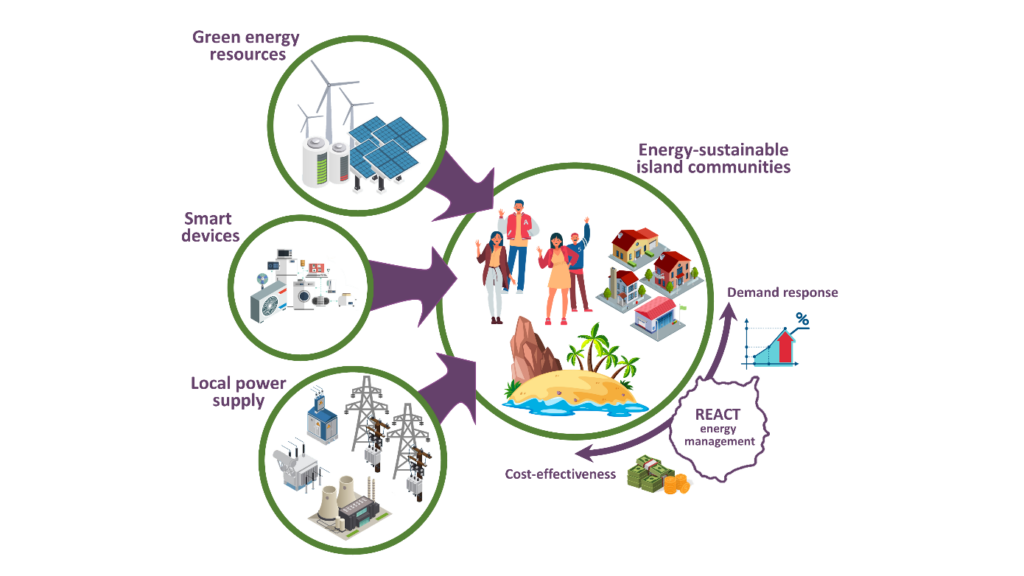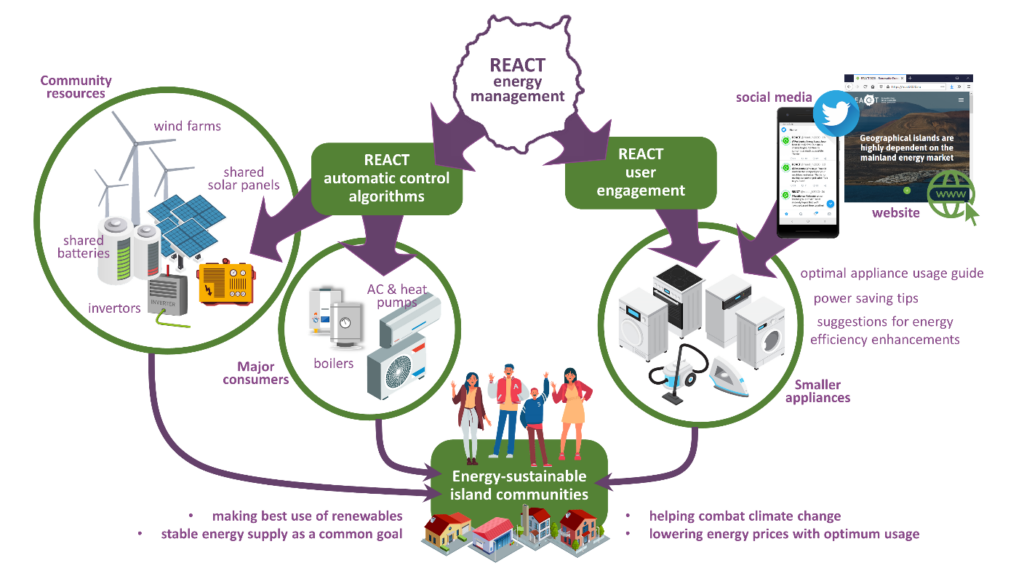Although it may not be apparent at first glance, small geographical islands are, metaphorically speaking, prisoners of their neighboring landmasses. Though it may seem a bit exaggerated, conditions on the mainland are what mostly dictates the energy availability and prices for islanders. With most islands relying on costly and precarious means of importing energy like fuel shipments, the power systems of small islands long for some modern solutions that would improve their grids by making them healthier and stronger.
Recent years witnessed an ever-growing deployment of renewable energy generation technologies like solar panels that convert sunlight into electricity and wind farms that transform wind power into electric current. These solutions are thought to be key providers of clean energy with many hoping that they will be a major contributor to reducing the negative effects of climate change. Given that the introduction of these technologies was, at least in the very beginning, costly and required certain know-how to be integrated into legacy power systems, their spread was initially, perhaps counterintuitively, limited to more developed energy infrastructures like major cities. However, with the technology becoming more widespread, renewables are reaching more and more remote consumers by the day, with many expressing their interest in consuming self-produced green energy rather than relying on grid imports.
The term “net-zero energy buildings”, or NZEBs for short, has been circling around lately and the transition that it entails has received significant support from the EU and other governments worldwide. This concept envisions that each household or building should, in total, produce the same amount of energy as they consume. This does not necessarily mean that all the energy that is consumed comes from local solar panels for example, but rather that for each kilowatt-hour of energy that is consumed, the same amount is also produced either then or at a different time. By doing this, each user can provide a small, but crucial input in ensuring a greener power supply. However, the most desirable results, both in terms of cost-effectiveness and reducing carbon emissions, are achieved by going a step further, and if each household or community, instead of simply producing the same amount as it consumes, uses the exact energy that it creates. This is where things get a bit more complicated…
The use of renewable sources and other synergetic technologies such as batteries, despite a lot of positive aspects, also comes with a set of challenges, especially when trying to make the best use of them. Given that the main idea of renewables is to harness the energy that naturally exists in the environment, it is no surprise that their power output depends a lot on current meteorological conditions. Unfortunately, this basically means that these innovative energy sources can sometimes behave unpredictably and are therefore hard to be used in the right way. However, REACT is here to help! Using modern technologies like artificial intelligence that are designed to make the best use of computing resources, as well as a bit of clever planning, the REACT system will help the involved communities in making the best use of their renewable potential while working to reduce energy bills and pave the way for a more stable energy supply system. Just like we use the weather forecast to know what meteorological conditions can be expected tomorrow, we can use the solutions that REACT will offer to help determine how much energy can be anticipated to be generated, but also how much is estimated to be consumed.
Ensuring a balance between the supply and demand is key in maintaining energy stability, especially for fragile power systems like ones found on small islands. Similar to following a good recipe from a cookbook, this is a sensitive process that requires some expertise in knowing how to follow well-known principles, but also having foresight into when a certain special ingredient should be added. This ingredient, at least in terms of energy management, is demand response, a concept that allows short-term changes to be made to the demand when the harmony of the system is thought to be in jeopardy. In order to make all this possible, REACT will consider all aspects of an energy-sustainable island community, its available green energy potentials, the corresponding power delivery system and its limitations, as well as the controllable devices at its disposal, all the while providing a balance between cost-effectiveness and energy supply stability by using demand response.

It can be argued that good management of joint community resources such as batteries, solar panels, as well as large consumers like boilers and air conditioning devices is the most significant part of the energy management recipe and, with the help of REACT, all these aspects will be considered and automatically controlled. However, individual islanders will also be able to help our cause by using their household appliances. Through following suggestions and general recommendations regarding ways in which they should respond with the goal of making a more significant impact towards energy sustainability which will be offered by REACT via the project website or social media, each willing participant in the project will provide benefits not only for themselves but for the community as a whole.

Written by: Marko Jelić, MSc EE & CS*
marko.jelic@pupin.rs
Institute Mihajlo Pupin, University of Belgrade
Volgina 15, Belgrade, Serbia